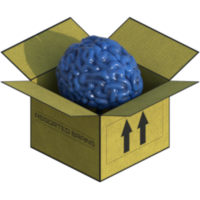Obvious tool and workflow questions:
- Do you attach arbitrary textures to parts of the 3D models (allowing and favoring reuse of specialized textures, e.g. a "polished wood" image applied to most of a chair), presumably with a postprocessing step that automatically rebuilds a consolidated texture atlas, or do you start with an automatically generated blank texture map and paint it?
- In the latter case, can you easily copy and paste texture portions between separate but compatible UV islands with the same shape and orientation? For example, your shelf UV map is full of slight shape differences and mirrored parts, complicating a nice rectangular layout.
- How do you combine painted textures and automatically generated textures like ambient occlusion or lightmaps?





